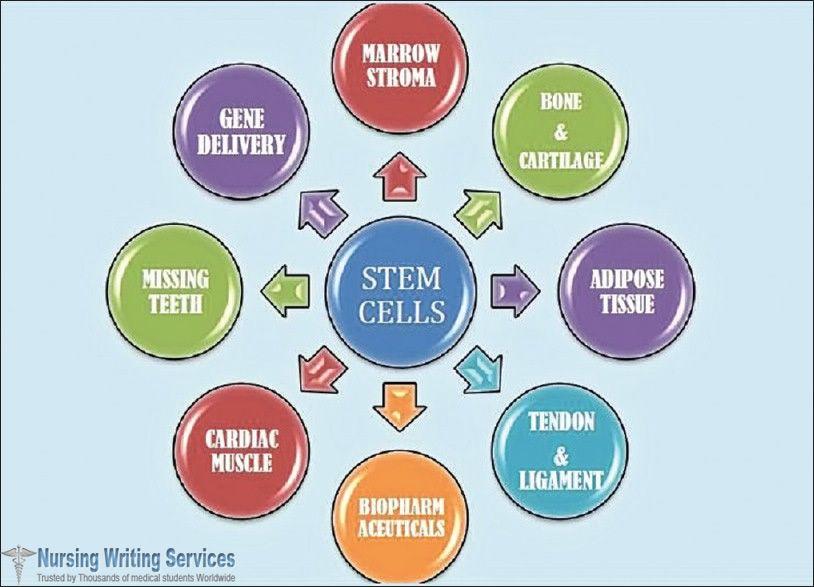
What are the uses of stem cells?
Stem cells are body cells that can divide and differentiate. Stem cells specialize as an organism grows to take specific functions. For instance, these mature tissues all have a different type of cells.
- Skin
- Blood
- Muscle
- Liver
- Bone
- Nerves
Stem cells can serve different purposes, and all of them are essential. Many stem cells can with the right stimulation take the role of another type of cell and under the right conditions can regenerate damaged tissue. This potential might save lives and allow repairs necessary for healing after an injury or illness. Scientists have many possible uses for stem cells including:
1. Tissue regeneration
Tissue regeneration could be the essential use of the stem cells. Before doctors knew about this ability of the stem cells, patients who required a kidney transplant had to wait till they got a donor with compatible kidneys. Another example of regeneration ability is when doctors use stem cells they derive beneath a skin surface to make skin tissue anew. They can use the new tissue to repair a severe injury or burn by grafting it onto the damaged skin for a new one to grow.
2. Replacement of damaged cells and treatment
Some medical facilities have already successfully used stem cells to treat extensive burns to restore the blood system in patients with blood disorders like leukemia. Stem cells also may have a key to the replacement of lost cells in other devastating diseases that currently do not have sustainable cures. For instance, donated organs and tissues can replace damaged tissue. However, the need for transplantable tissues or organs outweighs the available supply by far.
Stem cells are a possible renewable resource of replacement tissues for treating diseases with proper directing to differentiate them into specific types of cells. You can use in this manner to treat diseases such as diabetes, Parkinson's, stroke and heart conditions. It is an exciting prospect but has many significant hurdles that only years of intensive research can overcome.
ALSO READ:NURSING CASE STUDY WRITING SERVICE
3. Provide a resource to test new medical treatments
Stem cells provide a way of testing new medications for safety. Scientists use specialized cells that stem cell lines generate in large numbers to reduce the need for animal testing. Some kinds of cell lines are already in use for testing. A good example is the used of cancer lines to screen potential anti-tumor drugs.
Researchers are also testing ways in which doctors can one day use replacement cells and tissues for treating brain diseasessuch as Alzheimer's and Parkinson's. Parkinson’s disease occurs due to dame of the brain cells leading to uncontrollable movements. Stem cells are helping scientist to define a procedure for replenishing damage to the brain tissue. It might replace the brain cells that prevent uncontrolled muscle movements. Researchers are currently trying to differentiate embryonic cells into movement controlling cells thus treatments are promising.
4. Blood disease treatments
Doctors are now routinely using adult hematopoietic stem cells for treating diseases such as sickle cell anemia, leukemia, and other immunodeficiency problems. Hematopoietic stem cells occur in bone marrow and blood. The can produce all types of blood cells including those that fight disease or carry oxygen.
5.Studying development
Stem cells have clues that allow understanding of the way that complex organism develops from a fertilized egg. Scientists working in a lab can follow stem cells while they begin dividing to become increasingly specialized to make skin, brain, bone and other types of cell. Identifying signals mechanisms and signals that determine if stem cells choose to continue replicating itself or differentiating into a specialized or another kind of cell helps to learn the things that control normal development.
Some of the severe medical conditions like congenital disabilities and cancer occur due to an abnormal division and differentiation of the cell. A better understanding of the molecular and genetic controls of these processes might yield information to identify the way such diseases arise and new strategies for therapy.
Research is one of the essential goals of stem cell research. It is difficult in many cases to find the damaged cells during an illness for an in detail study. Stem cells that carry disease gene or made to contain disease genes provide a viable option to model disease processes in a lab and better understand the things that might have gone wrong.

